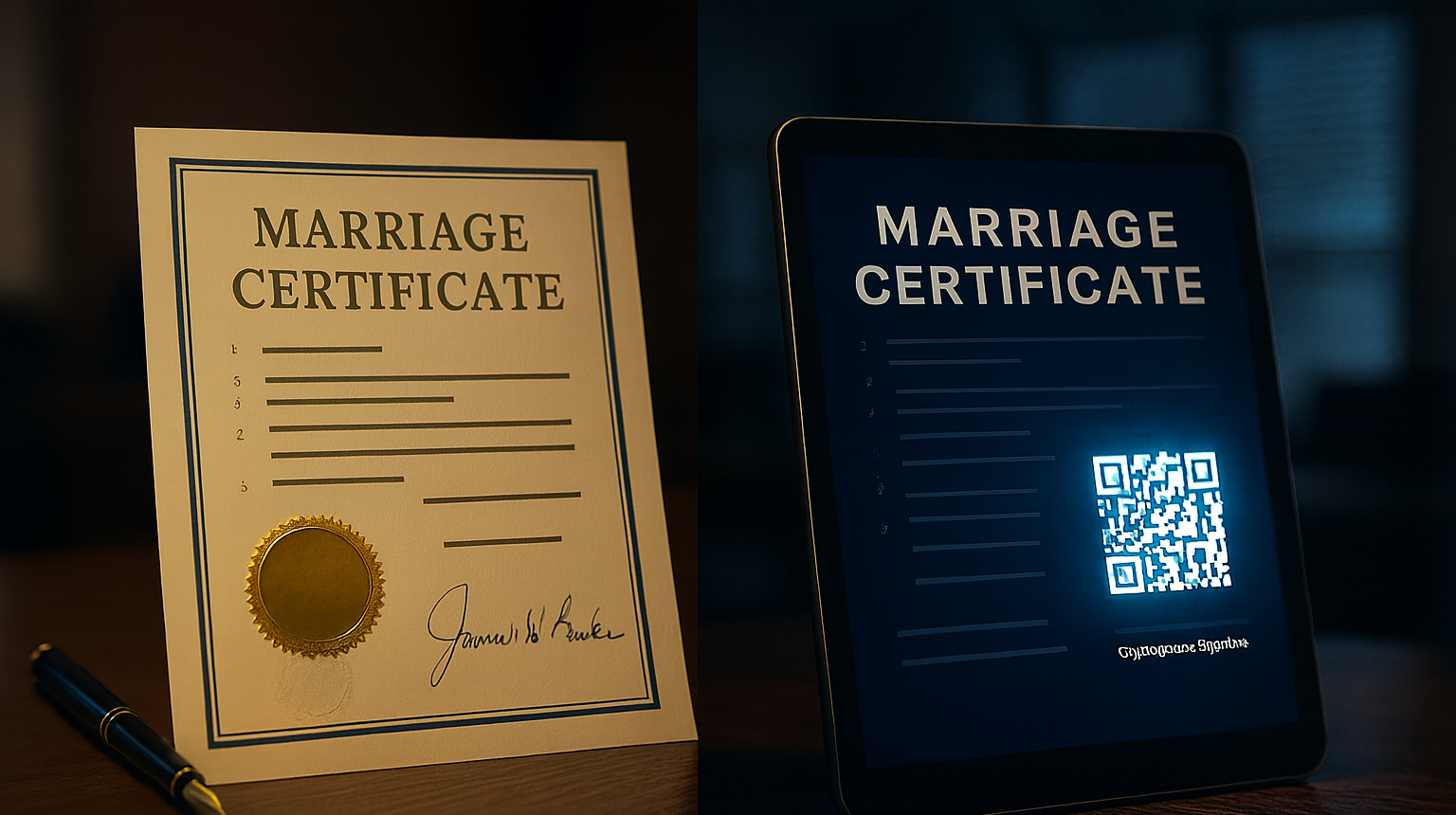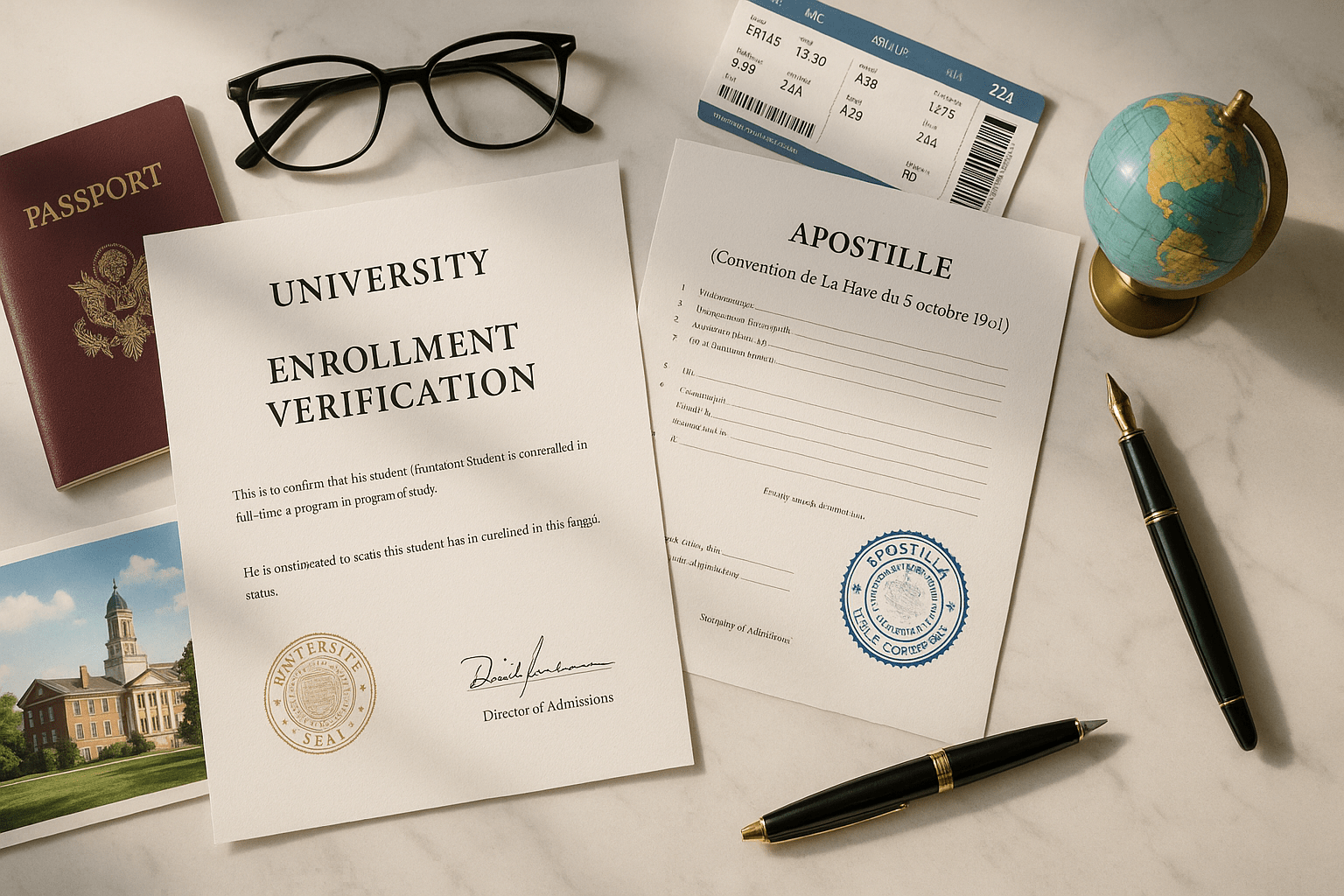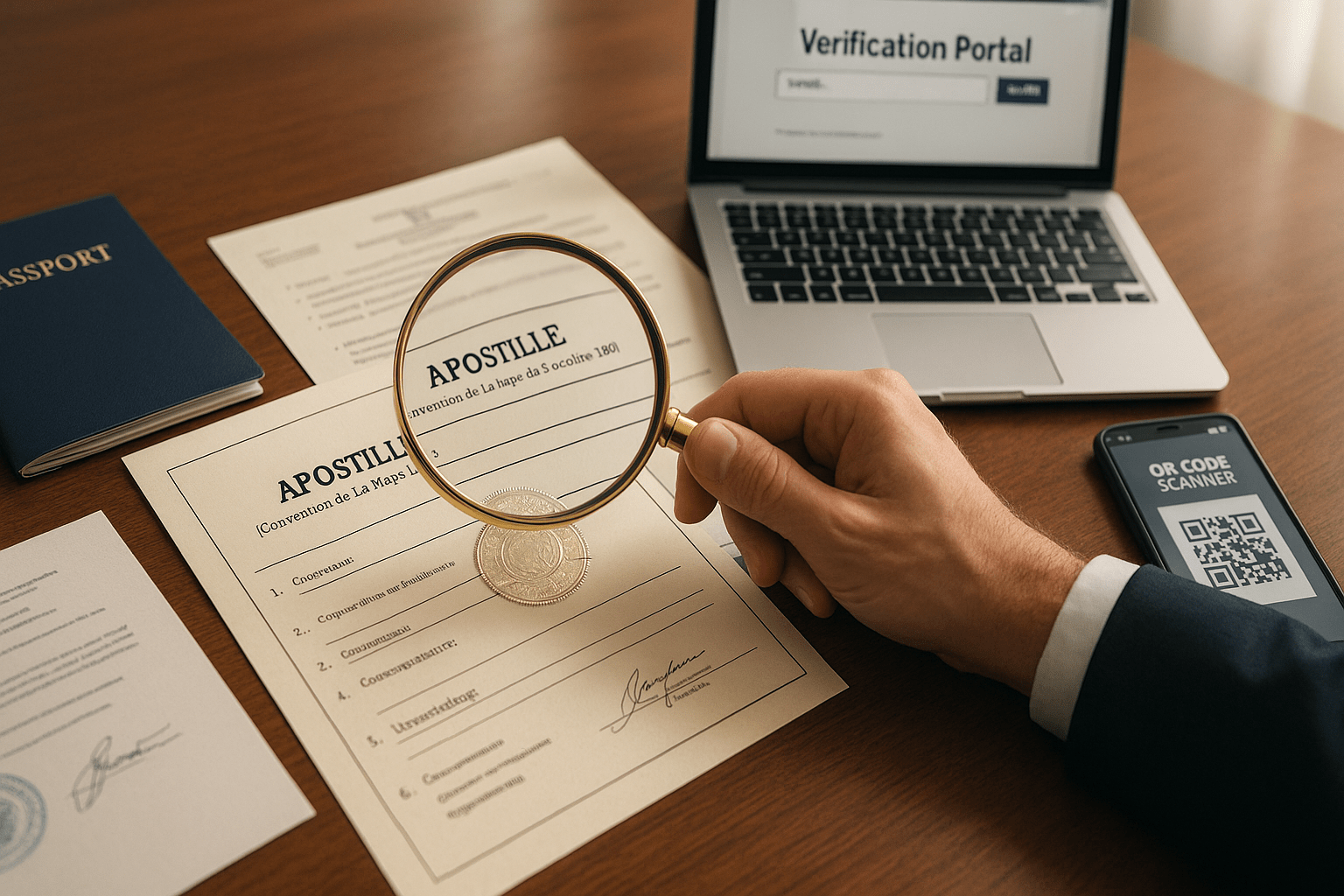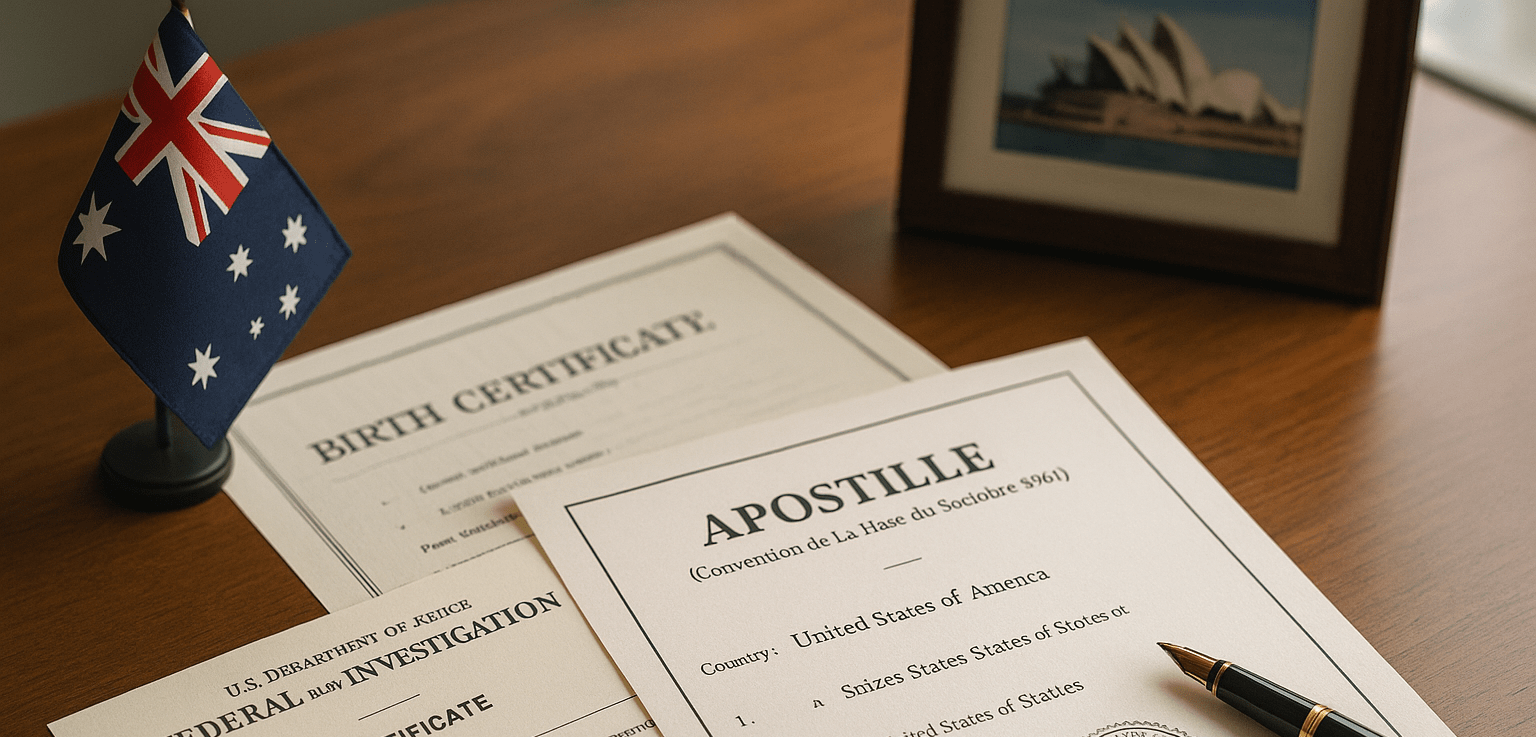
E-Apostille vs. Paper Apostille: US Process Differences
Imagine authenticating your paperwork with just a click — no more weeks of waiting or managing paper trails. This isn’t just a future vision; a revolution that changes how we navigate authentication is underway. So, how do we differentiate a paper apostille vs. an e-Apostille? As the modern digital apostille emerges in the USA, it’s time to unpack what it means for your next authentication task.
What Is a Traditional Paper Apostille?
Before delving into e-Apostille solutions in the USA, let’s first define the bedrock of authentication — the traditional paper apostille. It’s the long-standing method of obtaining a physical certification that we’re all familiar with. This part will unravel what this process entails.
Standard Format and Security Features
A paper apostille is a physical certificate affixed to your document. Typically issued by the Secretary of State or the DOS, the certificate boasts standardized elements like issuing authority, date of issuance, and destination country. For verification, features such as watermarks, raised seals, and unique identification numbers are added to prevent forgery.
When and Why a Paper Apostille Is Required
Despite the surge of digital apostilles in recent years, paper apostilles are still relevant in most areas that haven’t adopted digital systems. Specifically, foreign governments that aren’t part of the e-APP initiative likely require physical authentication for legal paperwork like vital records, court orders, and powers of attorney. Until e-Apostilles become universal, the paper format remains the safest and most popular path for international compliance.
What Is an e-Apostille?
An e-Apostille is more than a paperless version, but a game-changer for document validation. Having the potential to replace its traditional counterpart, a digital apostille takes the form of a cryptographically signed certificate attached to an electronic document. Here’s how it’s verified and where to obtain one:
Online Verification Process for Authorities Abroad
Submitting your e-Apostille to foreign authorities means they can instantly verify documents through secure platforms, often referred to as e-Registers. Instead of manually checking ink stamps, officials gain access to a system for online apostille verification of USA records provided by the issuing agency. The new process bypasses the risk of fraud and international shipping delays, making it efficient and appealing for urgent transactions or legal matters overseas.
Which U.S. States Have Implemented e-Apostille
At the moment, eight states that provide full digital apostille services include Montana, Utah, Rhode Island, Connecticut, Maryland, Washington, Minnesota, and Kentucky. Meanwhile, many others maintain e-Registers for online apostille verification but still stick with paper apostilles, such as New York, California, Texas, Arkansas, Delaware, Tennessee, North Carolina, and West Virginia. This mixed landscape highlights the transitional phase of digitization across the country.
U.S. Process Differences: Paper vs. e-Apostille
While both apostille formats serve the same authentication purpose, the journey to getting each in the U.S. may look really different. Let’s compare how the paper and digital process works side-by-side, from request to final delivery.
Application and Submission Channels
The paper apostille typically requires printing request forms, gathering physical copies of the paperwork, and navigating mail or in-person submissions at the state office. In contrast, the e-Apostille process is entirely digital via secure state portals. This digital route allows users to upload documents, pay processing fees, and receive certification remotely — all without postage hurdles.
Processing Times and Delivery Methods
Traditional apostilles usually take several days to weeks for processing. The wait might also extend due to mail transit or office backlog. E-Apostilles, on the other hand, can be issued within days or even hours. The delivery is electronic, meaning your digital apostille will be sent directly to your email inbox for download. Instant access to approval without courier delays accelerates the timeline dramatically.
Cost Considerations and Hidden Fees
The paper version usually comes with extra costs — think of expenses covering courier services, printing, and long-distance travel. Most states and private services also charge for expedited options if you want to speed up the process for a deadline. The e-Apostille offers a lower upfront fee by eliminating the shipping fees associated with your request submission, making it a perfect choice for budget-friendly authentication.
Advantages and Limitations
The benefits of e-Apostille are undeniable, especially for U.S. citizens abroad. Digital apostilles enable authentication from across the globe, skipping weeks of back-and-forth international shipping. Whether you’re finalizing a job offer or applying for residency, USA digital apostille services eliminate geographical barriers and reduce the time it takes to access authenticated documents.
Nevertheless, limitations still exist. Exclusive countries and U.S. states that participate in the e-APP are guaranteed to issue and accept e-Apostilles. Other nations in the Hague Convention may recognize them, but it’s highly recommended to check with the receiving institution first. For the rest, the paper format is the only valid authentication path when sending documents abroad.
Future of Apostille in the U.S.
While the momentum of the digital shift is clear, the future of e-Apostille in the USA hinges on a complex combination of technology, jurisdiction, and international cooperation. So, what can we expect from this new way of document authentication in the upcoming years? Let’s take a look!
Federal vs. State Authority in Digital Adoption
State-level apostille issuance is authorized by individual states rather than the federal government. Such a decentralized model results in a patchwork where one state may offer e-Apostilles while its neighbor remains paper-only. Hence, nationwide consistency develops slowly due to differing state requirements, which can be confusing to applicants who obtain authentication from multiple states.
Potential Expansion of e-Apostille Services
As pioneering states like Connecticut and Utah showcase their success in implementing digital systems for authentication, expansion to other places seems inevitable. Many have prepared themselves for adoption, such as investing in technological upgrades and pilot programs. With growing public demand and peer pressure for modernization, e-Apostille services will soon phase out the paper-based system in most states.
Trends in Global Acceptance
Acceptance of digital apostilles is steadily climbing all over the world, empowered by the Hague Convention’s e-APP. More countries upgrade their verification systems, making the e-Apostille widely recognized and diminishing the reliance on paper certificates. Staying informed on your target nation’s technology integration is key to having your digital apostille accepted smoothly.
Final Thoughts on Paper vs. e-Apostille
Authentication is moving toward digital solutions, and understanding the paper apostille vs e-Apostille is more important than ever. While the traditional way provides universal acceptance, digital apostilles deliver unmatched speed, efficiency, and security where available. Knowing which format works for your situation helps you speed up processing time and avoid complications.
FAQ
You’ll find frequently asked questions and answers about e-Apostille in the USA in this part.
Can I choose between paper and e-Apostille in every U.S. state?
No. Only selected states that have taken part in the e-APP initiative offer digital options for document authentication. Most states issue paper-based apostilles, so you should check the state’s official website to see if you can obtain an e-Apostille.
Are e-Apostilles accepted in all Hague Convention countries?
Not yet. Countries participating in the e-APP accept digital apostilles, but others might require you to submit the physical versions. It’s best to verify this requirement before requesting an e-Apostille.
How do I check if my document has been issued an e-Apostille?
You can verify the apostille status online for USA documents via the issuing state’s e-Register, which is a public database for apostille verification. Simply input the unique reference number or scan the QR code for instant confirmation.
What should I do if my state doesn’t offer e-Apostille yet?
You’ll need to request a traditional paper apostille instead. Though it involves mailing or in-person submissions to the state office, this approach is valid and widely accepted overseas.
Is an e-Apostille more secure than a paper apostille?
Yes, to some extent. E-Apostille relies on tamper-proof electronic signatures, so it’s impossible to forge. Plus, foreign officials can verify the apostille online in real-time, adding a powerful layer of transparency and security.





